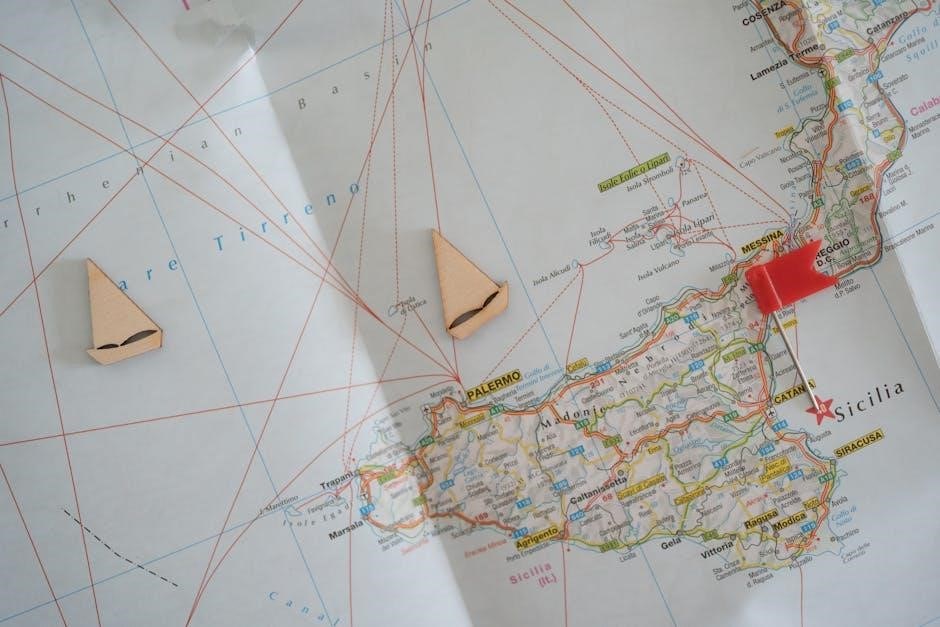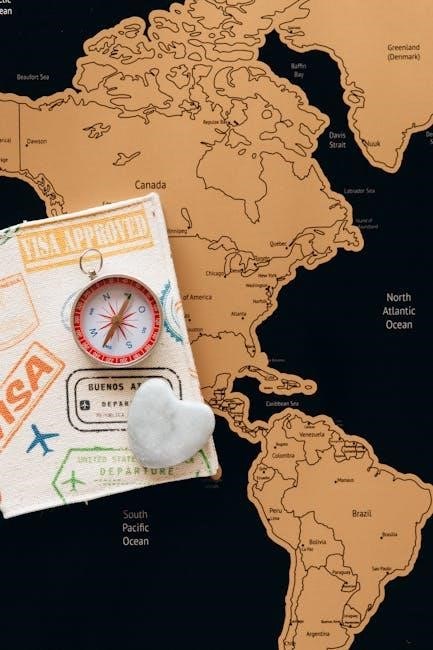Everest Guide Crossword Clue: A Comprehensive Plan
Today’s quick crossword features the clue: “Guides working on Mount Everest.” This exploration delves into solving this puzzle, examining strategies and the correct answer – SHERPAS – alongside their vital role.
Crossword puzzles are a globally cherished pastime, demanding both linguistic skill and general knowledge. Clues often employ clever wordplay, synonyms, and indirect references, challenging solvers to think creatively. The difficulty can range from simple definitions to intricate riddles, making them accessible to a wide audience. Today’s puzzle presents a clue directly linked to the world’s highest peak: “Guides working on Mount Everest.”
Mount Everest, standing at 8,848.86 meters (29,031.7 feet), is a formidable challenge for mountaineers. Located in the Mahalangur Himal sub-range of the Himalayas, it straddles the border between Nepal and Tibet (China). The mountain’s allure stems from its extreme altitude and the inherent risks associated with climbing it. Successfully reaching the summit requires extensive preparation, specialized equipment, and, crucially, the expertise of experienced guides.

The intersection of crossword puzzles and Everest highlights the cultural significance of the mountain and the individuals who facilitate expeditions. This clue isn’t merely about geography; it touches upon the human element – the dedicated professionals who make these ambitious climbs possible. Understanding this context is key to unlocking the solution.

Understanding the Clue: “Guides Working on Mount Everest”
The clue “Guides working on Mount Everest” is deceptively simple. It doesn’t ask for a geographical feature or a piece of equipment, but rather for the people who provide essential support to climbers. The wording is deliberately broad – “guides” – encompassing a range of roles and responsibilities. This suggests the answer will be a collective noun, representing a group of individuals rather than a specific person or item.
Analyzing the phrase, “working on Mount Everest” immediately narrows the possibilities. This isn’t about tourists visiting the base camp, but those actively involved in the climbing process. The clue implies a deep understanding of the mountain’s environment and the challenges it presents. It requires knowledge of who possesses the skills and experience necessary to navigate the treacherous terrain and assist climbers at extreme altitudes.
Consideration of the crossword’s source – “Crosswords With Friends quick crossword” – suggests a relatively common and well-known answer is expected. Complex or obscure terms are less likely in this context. The clue’s structure points towards a culturally significant group intrinsically linked to Everest’s climbing history.
Common Crossword Solving Strategies
When tackling a crossword clue like “Guides working on Mount Everest,” several strategies prove invaluable. First, consider the clue’s length. The number of squares dictates the word’s length, immediately eliminating possibilities. Second, look for defining words. Here, “Everest” is crucial, anchoring the answer to the mountain and its associated culture.
Third, think about common crossword conventions. Clues often employ synonyms, puns, or indirect references. However, given the straightforward nature of this clue, a direct association is more probable. Fourth, utilize “crossers” – letters already filled in from intersecting clues. These provide valuable starting points and constraints.
Fifth, brainstorm related terms. Consider the activities involved in climbing Everest: support, navigation, high-altitude expertise. Sixth, if stuck, try alternative word forms (plural vs. singular, verb tenses). Finally, don’t hesitate to use online resources, but remember the goal is to solve it yourself! A systematic approach, combined with knowledge of Everest’s context, significantly increases the chances of success.

The Solution: SHERPAS
The definitive answer to the crossword clue “Guides working on Mount Everest” is SHERPAS; This six-letter word perfectly encapsulates the individuals integral to Everest expeditions. Sherpas are an ethnic group native to the mountainous regions of Nepal, renowned for their exceptional mountaineering skills and physiological adaptations to high altitude.
Their expertise isn’t merely about physical prowess; it’s a deeply ingrained cultural heritage. Generations of Sherpas have lived and worked in the Himalayas, developing an unparalleled understanding of the terrain, weather patterns, and the challenges of extreme altitude. Historically, they’ve been essential for carrying loads, setting routes, and providing crucial support to climbers.
The term “Sherpa” has become synonymous with high-altitude guiding, representing resilience, strength, and unwavering dedication. In the context of the crossword, it’s a concise and accurate answer, fitting both the clue’s wording and the overall theme of mountaineering. Therefore, SHERPAS is the logical and correct solution.
Why “SHERPAS” is the Correct Answer

“SHERPAS” stands as the only logical solution because it directly addresses the clue’s core meaning: individuals who guide on Mount Everest. While other professions exist on the mountain – climbers, researchers, and support staff – only Sherpas are specifically known for their guiding role. Their historical and ongoing contribution to Everest expeditions is undeniable.
The clue uses the term “guides,” implying expertise in leading others through challenging terrain. Sherpas possess this expertise innately, honed through centuries of living and working in the Himalayas. Their physiological adaptations, including increased lung capacity and efficient oxygen utilization, further solidify their suitability for high-altitude guidance.
Furthermore, the cultural significance of Sherpas on Everest cannot be overstated. They aren’t simply hired hands; they are integral partners in the success of expeditions. Considering the context of a crossword puzzle, which favors concise and precise answers, “SHERPAS” is the most fitting and accurate response to the given clue. It’s a culturally relevant and factually correct solution.
The Historical Role of Sherpas on Everest
Historically, the Sherpa people have inhabited the high-altitude regions of Nepal, developing a unique cultural and physiological adaptation to the harsh mountain environment. Their involvement with Everest expeditions began in the early 20th century, initially as porters carrying supplies for Western climbers. However, their role quickly evolved beyond mere logistical support.
Early expeditions heavily relied on Sherpas’ intimate knowledge of the mountain, weather patterns, and terrain. Figures like Tenzing Norgay, who famously accompanied Sir Edmund Hillary to the summit in 1953, demonstrated the Sherpas’ exceptional climbing skills and resilience. This achievement marked a turning point, recognizing Sherpas not just as support staff, but as essential partners in reaching the peak.
Over decades, Sherpas transitioned into skilled mountaineers, guides, and route-fixers, responsible for establishing and maintaining the safest path to the summit. Their expertise became indispensable, and their contributions were crucial to the increasing success rates of Everest expeditions. The historical narrative demonstrates a shift from porterage to leadership, solidifying the Sherpas’ place as the backbone of Everest mountaineering.
Sherpa Culture and Traditions
Sherpa culture is deeply rooted in Tibetan Buddhism, influencing their worldview, social structures, and daily life. Their name, “Sherpa,” translates to “people of the east,” originating from their ancestral homeland in eastern Tibet. Traditionally, they were nomadic yak herders and traders, developing remarkable physical endurance and a profound respect for the mountains.
Central to Sherpa beliefs is the reverence for sacred mountains, considered abodes of deities. Mount Everest, known locally as Chomolungma (“Goddess Mother of the World”), holds immense spiritual significance. Religious ceremonies and rituals are performed to appease mountain spirits and ensure safe passage. Family and community bonds are exceptionally strong, with a collective approach to challenges.
Unique traditions include the practice of Nyingma Buddhism, vibrant festivals like Dumji, and distinctive artistic expressions in weaving and woodcarving. Hospitality is highly valued, and visitors are welcomed with warmth and generosity. Understanding Sherpa culture is crucial to appreciating their contributions to Everest expeditions, recognizing them as more than just guides, but as custodians of a rich heritage.
The Importance of Sherpas to Everest Expeditions
Sherpas are absolutely indispensable to the success and safety of Everest expeditions. Their physiological adaptations to high altitude – developed over generations – allow them to thrive where others struggle, making them uniquely suited for guiding and support roles. They aren’t merely guides; they are the backbone of nearly every expedition.
Historically, Sherpas initially served as porters, carrying loads for early expeditions. Today, their roles have evolved significantly. They now function as highly skilled mountaineers, route-fixers, and logistical experts. Route-fixers establish the safest path through treacherous terrain, including navigating the Khumbu Icefall and setting up ropes on steep sections.
Crucially, Sherpas carry vital supplies – oxygen, food, and equipment – establishing camps and ensuring climbers have the resources needed to reach the summit. Their intimate knowledge of the mountain’s weather patterns and terrain is invaluable. Without their expertise, the risks associated with climbing Everest would be exponentially higher, and successful ascents far less frequent. They represent a critical partnership in achieving mountaineering goals.
Sherpa Responsibilities: Before the Ascent
Prior to any Everest ascent, Sherpas undertake extensive preparatory work, forming the foundation for a successful expedition. This begins with logistical planning, including procuring supplies – food, oxygen, tents, and climbing gear – and meticulously organizing their transport to Base Camp. They are instrumental in establishing and maintaining Base Camp itself, creating a habitable environment in a harsh landscape.
A critical responsibility is acclimatization. Sherpas lead climbers on rotations up the mountain, gradually exposing them to higher altitudes to minimize the risk of altitude sickness. They monitor climbers’ health closely, assessing their response to the increasing elevation. Route-fixing teams begin the arduous task of establishing a safe path through the Khumbu Icefall and up the slopes, securing ropes and ladders.
Furthermore, Sherpas are responsible for carrying significant loads during these acclimatization rotations, pre-positioning supplies at higher camps. They also conduct thorough weather assessments, constantly monitoring conditions and advising on the optimal timing for a summit push. Their pre-ascent work is physically demanding and strategically vital, ensuring climbers begin their summit attempt in the best possible condition.
Sherpa Responsibilities: During the Ascent
As climbers begin their summit push, Sherpa responsibilities intensify dramatically. They continue to carry substantial loads, often multiple oxygen bottles and equipment for clients, significantly lightening the burden for those attempting the peak. Maintaining the fixed ropes becomes paramount; Sherpas constantly inspect and repair them, ensuring a secure passage for all climbers.

Crucially, Sherpas act as guides and mentors, providing encouragement, technical assistance, and critical decision-making support. They monitor climbers for signs of fatigue, altitude sickness, or frostbite, offering immediate assistance when needed. In challenging conditions, they may even share their oxygen supply with struggling climbers, demonstrating extraordinary selflessness.
Throughout the ascent, Sherpas manage the flow of climbers, preventing bottlenecks and ensuring a safe pace. They are adept at navigating treacherous terrain and making quick assessments of changing weather conditions. Their expertise is invaluable in managing emergencies, including rescues and evacuations. Ultimately, their presence is a constant source of reassurance and support during the most demanding phase of the expedition.
Sherpa Responsibilities: Post-Ascent & Logistics
Following a successful summit, Sherpa duties don’t end with the climbers’ descent. They are instrumental in dismantling high camps, retrieving discarded oxygen bottles and equipment – a vital environmental concern on Everest. This often involves multiple trips, carrying heavy loads down the mountain, even after enduring extreme exertion themselves.
Logistically, Sherpas manage the transportation of all gear back to Base Camp, ensuring everything is accounted for and properly stored. They assist with packing and organizing for the journey home, streamlining the process for clients; Communication with Base Camp regarding the condition of climbers and equipment is continuous and critical.
Beyond the physical tasks, Sherpas provide emotional support to climbers during the post-summit phase, acknowledging their achievement and offering assistance with any lingering effects of altitude or exhaustion. Their role extends to assisting with medical check-ups and ensuring climbers receive appropriate care. Finally, they contribute to the overall cleanup of the mountain, leaving it as pristine as possible for future expeditions, demonstrating a deep respect for the environment.

The Risks Faced by Sherpas
Mount Everest presents immense dangers, and Sherpas disproportionately bear the brunt of these risks. They undertake the most hazardous tasks – fixing ropes, carrying loads, and repeatedly traversing the Death Zone – significantly increasing their exposure to altitude sickness, frostbite, and falls.
The Khumbu Icefall, a constantly shifting glacier, is particularly treacherous. Serac collapses and crevasse falls pose a constant threat, resulting in numerous Sherpa fatalities over the years. Avalanches are another major hazard, especially during periods of heavy snowfall or unstable weather conditions.
Furthermore, Sherpas often carry heavier loads than clients, pushing their physical limits and increasing the risk of exhaustion and injury. Access to adequate medical care is limited at high altitudes, making even minor injuries potentially life-threatening. Historically, insurance coverage and financial compensation for Sherpas have been inadequate, leaving families vulnerable in the event of an accident. Despite improvements, risks remain substantial, highlighting the incredible courage and resilience of these essential guides.
The Economic Impact of Everest Guiding on Sherpa Communities
Everest guiding is a cornerstone of the economy for many Sherpa communities, providing crucial income and opportunities. While mountaineering expeditions generate substantial revenue, the distribution of wealth has historically been uneven. Sherpas earn a significant portion of their annual income during the spring climbing season, supporting families and funding education.
However, reliance on Everest guiding creates economic vulnerability. The industry is susceptible to disruptions like weather events, political instability, and global pandemics, as seen in recent years. Diversification of income sources is therefore vital for long-term economic resilience.
Increasingly, Sherpa-owned businesses – trekking agencies, lodges, and equipment rental services – are emerging, allowing communities to retain more of the economic benefits. Furthermore, initiatives promoting sustainable tourism and responsible mountaineering practices aim to ensure a fairer distribution of wealth and minimize environmental impact. The future economic well-being of Sherpa communities depends on balancing the opportunities presented by Everest with the need for diversification and equitable benefit-sharing.
Evolution of Sherpa Roles in Mountaineering
Initially, Sherpas were primarily employed as porters, carrying loads for early expeditions to Everest. Their remarkable physiological adaptations to high altitude quickly became apparent, leading to a shift in their roles. Over time, they transitioned from solely logistical support to becoming integral members of climbing teams, skilled in route-finding, fixing ropes, and establishing camps.
The 20th century witnessed a growing recognition of Sherpa mountaineering expertise. Individuals like Tenzing Norgay, who reached the summit with Edmund Hillary in 1953, demonstrated exceptional climbing abilities, challenging previous perceptions. Subsequently, Sherpas began leading expeditions and achieving summits independently.
Today, Sherpa guides are highly sought after for their experience, strength, and knowledge of Everest. They are no longer simply support staff but respected mountaineers in their own right. However, this evolution has also brought increased risks and demands, prompting ongoing discussions about fair treatment, safety standards, and recognition of their invaluable contributions to the world of mountaineering.
Famous Sherpas in Everest History
Tenzing Norgay remains the most globally recognized Sherpa, celebrated for his 1953 ascent with Edmund Hillary, marking the first confirmed summit of Mount Everest. His achievement transcended mountaineering, becoming a symbol of courage and partnership. However, many other Sherpas have profoundly impacted Everest’s history.
Ang Rita Sherpa, known as the “Snow Leopard,” holds the record for the most ascents of Everest without supplemental oxygen – a remarkable feat demonstrating exceptional acclimatization and skill. Apa Sherpa boasts 21 successful summits, the most by any individual, showcasing incredible endurance and dedication.
Lhakpa Gelu Sherpa became the first Sherpa woman to summit Everest in 2000, breaking barriers and inspiring future generations. Phurba Tashi Sherpa, with 21 summits, shares Apa Sherpa’s record, highlighting the consistent contributions of Sherpa climbers. These individuals, and countless others, represent the strength, resilience, and vital role of Sherpas in Everest’s ongoing story.
The Sherpa Oxygen System & High-Altitude Support
Sherpas are integral to establishing and maintaining the fixed rope systems and oxygen supplies crucial for successful Everest expeditions. They often pre-position oxygen bottles at higher camps, a physically demanding task performed at extreme altitudes, significantly reducing risks for other climbers. This involves carrying heavy loads, sometimes multiple bottles at once, above the “Death Zone” (above 8,000 meters).
The oxygen systems themselves are complex, requiring Sherpas to be proficient in their setup, maintenance, and troubleshooting. They monitor oxygen flow rates and ensure climbers utilize the equipment correctly, vital for preventing altitude sickness and maintaining performance. Furthermore, Sherpas are trained in recognizing and responding to hypoxia symptoms in others.
Beyond oxygen, Sherpas provide critical logistical support, including setting up tents, preparing meals, and monitoring weather conditions. Their expertise in high-altitude physiology and their ability to function effectively in extreme environments are invaluable, making them essential for the safety and success of all Everest climbers. This support extends to emergency situations, where Sherpas often lead rescue efforts.
Training and Certification for Sherpa Guides
Historically, Sherpa guiding skills were passed down through generations, a tradition rooted in their deep understanding of the Everest region and its challenges. However, modern mountaineering demands increasingly specialized training, leading to formalized programs. These programs now encompass a range of skills, from advanced mountaineering techniques to wilderness first aid and rescue procedures.
The Nepal Mountaineering Association (NMA) offers courses and certifications for Sherpa guides, covering rope fixing, crevasse rescue, and high-altitude medical care. International guiding organizations also provide training, enhancing Sherpa expertise in client management and safety protocols. These certifications are becoming increasingly important for securing employment with reputable expedition companies.
Furthermore, many Sherpas receive on-the-job training from experienced guides, learning practical skills and refining their judgment in real-world scenarios. This mentorship system remains a vital component of their development. Ongoing training is crucial, as mountaineering techniques and safety standards evolve. The commitment to continuous learning ensures Sherpas remain at the forefront of high-altitude guiding.

Ethical Considerations in Everest Guiding
The increasing commercialization of Everest expeditions raises significant ethical concerns regarding Sherpa guides. Historically, the relationship was often based on mutual respect and shared risk, but the modern industry introduces power imbalances and potential exploitation. Fair wages, adequate insurance, and proper equipment are fundamental ethical obligations for expedition operators.
Concerns exist about Sherpas being disproportionately exposed to danger, undertaking the most hazardous tasks – like fixing ropes – for lower compensation than foreign climbers. The pressure to summit, driven by client expectations, can compromise safety protocols and lead to risky decisions. Responsible guiding prioritizes Sherpa well-being over summit success.
Transparency in expedition costs and revenue distribution is crucial. Furthermore, respecting Sherpa culture and traditions is paramount, avoiding the commodification of their expertise and knowledge. Sustainable tourism practices, minimizing environmental impact and supporting local communities, are also essential ethical considerations. Promoting Sherpa ownership and leadership within the guiding industry is vital for ensuring a more equitable and ethical future.

Recent Changes & Challenges Facing Sherpa Guides
Recent years have witnessed evolving challenges for Sherpa guides on Everest. Climate change is accelerating glacial melt, increasing the risk of avalanches and icefalls, demanding greater skill and adaptability. The increasing number of climbers attempting summits leads to overcrowding, creating bottlenecks and heightened danger on the mountain.
Furthermore, the demand for faster ascents puts immense pressure on Sherpas to fix ropes and carry loads at an accelerated pace, compromising safety. Economic pressures, while providing income, can also lead to Sherpas accepting risks they might otherwise avoid. The rise of independent climbers, lacking experience and proper support, adds another layer of complexity.
Efforts are underway to improve training and certification standards, but access remains uneven. Advocacy for better insurance coverage and fair wages continues, though progress is slow. The COVID-19 pandemic significantly disrupted expeditions, impacting Sherpa livelihoods. Looking ahead, balancing commercial interests with the safety and well-being of Sherpa guides remains a critical challenge.
Alternative Clues Related to Everest & Sherpas

Expanding beyond “Guides working on Mount Everest,” numerous alternative crossword clues connect to the Sherpa experience and Everest itself. Consider “High-altitude porters,” referencing their crucial load-carrying role. “Mountaineering experts from Nepal” directly points to their origin and expertise. A clue like “Masters of the ‘Death Zone’” highlights their acclimatization and skill at extreme altitudes.
More challenging clues could be “Tenzing Norgay’s people,” alluding to the famous Sherpa who accompanied Hillary. “Rope-fixing professionals on Everest” focuses on a specific, vital task. For a geographical angle, “People of the Solukhumbu region” connects them to their homeland. A clue referencing their spiritual beliefs could be “Followers of Tibetan Buddhism on Everest.”
Creative options include “Essential support team for climbers” or “Individuals vital to Everest success.” These alternatives offer varying levels of difficulty, appealing to a wider range of crossword solvers. Ultimately, the best clues balance accuracy, cleverness, and a connection to the rich history and culture surrounding Everest and its Sherpa guides.
Appreciating the Role of Everest Guides
Solving the crossword clue “Guides working on Mount Everest” – SHERPAS – is more than just filling in blanks. It’s a gateway to understanding the profound contribution of these remarkable individuals to the world of mountaineering. Their expertise, resilience, and deep connection to the mountain are indispensable to the success and safety of expeditions.
Beyond their technical skills in rope-fixing, load-carrying, and route-finding, Sherpas embody a spirit of hospitality and unwavering support. Recognizing their historical role, cultural significance, and the inherent risks they face is crucial. The economic impact on Sherpa communities, while complex, underscores the importance of ethical and sustainable tourism practices.
As mountaineering evolves, so too do the roles and responsibilities of Sherpa guides. Continued training, fair compensation, and respect for their traditions are paramount. Ultimately, appreciating the role of Everest guides means acknowledging their humanity, celebrating their heritage, and ensuring a future where their contributions are valued and protected. The next time you encounter this clue, remember the story behind the answer.
